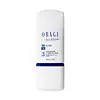What's inside
What's inside
 Key Ingredients
Key Ingredients

 Benefits
Benefits

 Concerns
Concerns

 Ingredients Side-by-side
Ingredients Side-by-side

Hydroquinone
StabilisingAscorbic Acid
AntioxidantBHT
AntioxidantButylparaben
MaskingCetyl Alcohol
EmollientDisodium EDTA
Glycerin
HumectantLactic Acid
BufferingMethylparaben
PreservativePhenyl Trimethicone
Skin ConditioningPPG-2 Myristyl Ether Propionate
EmollientPropylparaben
PreservativeSaponins
CleansingSodium Lauryl Sulfate
CleansingSodium Metabisulfite
AntioxidantStearyl Alcohol
EmollientTocopheryl Acetate
AntioxidantWater
Skin ConditioningAlternatives
Ingredients Explained
These ingredients are found in both products.
Ingredients higher up in an ingredient list are typically present in a larger amount.
Hydroquinone is used to treat hyperpigmentation, acne scars, and age spots.
It works by decreasing the melanocytes in your skin. Melanocytes are cells that create melanin (the color pigment in skin).
Be sure to use this ingredient as prescribed by your doctor. Wearing sunscreen is also a must (you should be wearing sunscreen anyway!).
Most hydroquinone prescriptions are not to be used for longer than 3 months. Long term usage can cause ochronosis, or a condition in which the skin darkens more than before.
This ingredient is banned in the EU for being skin sensitizer. In the US, this ingredient is not allowed for over-the-counter sale.
However, it is still possible to get hydroquinone in the EU, US, Canada, Australia, and Japan from a doctor's prescription.
There is no known research backing this ingredient to be carcinogenic in humans.
Check out the European alternative to hydroquinone here.
Gentle reminder that all skin tones are beautiful!
Learn more about Hydroquinone